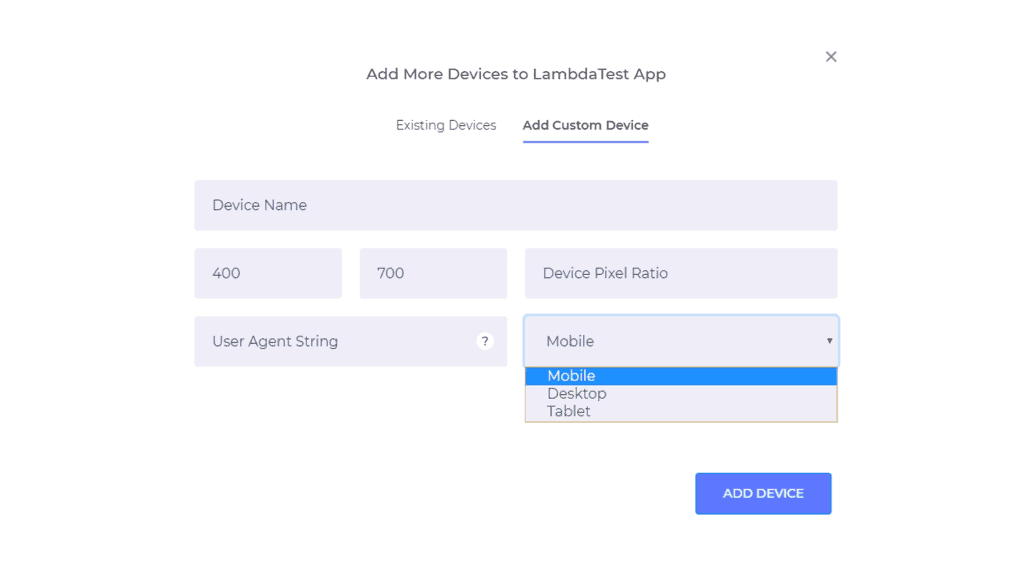
03 Jan How to Do Mobile App Testing 101
In the earlier years, the computer was the only way to browse the internet. With the advancement of technology, the non-portability of a desktop computer seemed to be a downside as most people were on the go. Smartphones quickly caught up to this market and utilized the demand.
Companies also realized that creating a stable mobile application is highly important to attract the attention of new users and retain the old ones. So, mobile devices control more than 50 percent of online traffic. This process automatically exploded the mobile app development industry.
In simple terms, a stable mobile application plays a vital role in increasing user retention and decreasing bounce rates. Therefore, this article will discuss everything you need to know about mobile app testing.
Table of Contents
Importance of Mobile App Testing
 If your company creates a slow mobile application even after months of development, product designing, and testing, it is bound to fail and make a negative impression on your business. A psychological survey states that all end-users avoid horrible and buggy user interfaces and performance applications.
If your company creates a slow mobile application even after months of development, product designing, and testing, it is bound to fail and make a negative impression on your business. A psychological survey states that all end-users avoid horrible and buggy user interfaces and performance applications.
All these factors justify the importance of mobile app testing during the development life cycle. The combination of mobile app testing and quality assurance is one of the crucial steps of the development process. It is responsible for the making and breaking of an application.
Moreover, since the testing phase is responsible for determining the application’s success, it should be combined at every stage of the development process. The lack of a testing strategy can dramatically decrease the efficiency of the testing environment.
Now, let us take a quick look at a brief step-by-step guide for the ultimate mobile app testing experience.
Step-By-Step Guide for Mobile App Testing
Step 1: The Planning Session
Before beginning the testing process, you must plan the entire testing session. In this plan, you must analyze all the hypothetical cases developers will use to test the mobile application. You should also have a brief idea about some of the errors that might arise during the testing process.
During the planning session, you should also analyze all the areas that will require manual testing and those that will require automated testing. Analyzing all these factors will allow you to create necessary solutions and backup plans to ensure the timely delivery of the mobile application.
Step 2: Choosing the Correct Types of Tests
 Depending on the type of mobile application, you should analyze all the different types of tests you need to perform. The different types of tests you need to perform on a mobile application include functionality, usability, performance, security, and compatibility testing.
Depending on the type of mobile application, you should analyze all the different types of tests you need to perform. The different types of tests you need to perform on a mobile application include functionality, usability, performance, security, and compatibility testing.
After creating the list of all the major tests, you need to find the devices to test the mobile application. All these types of tests will ensure that every function of the application performs as expected. For this purpose, it is a great idea to perform market research about the most popular mobile devices.
A recent survey suggests that more than 70% of the mobile userbase consists of more than two years old devices. You should also determine the operating systems with most user bases, the audience type, and device hardware. All these factors will help you make your application available to a larger audience base.
Step 3: Preparing the Test Cases
You must maintain a document of all the test cases you will perform on the mobile application. This document must contain all the details of every feature and function to make the necessary changes. You should also maintain the combination of automation and manual testing in this document.
After this, you can prepare customized test cases to perform all the mobile application testing. You can analyze the data and make the necessary changes to improve the application’s functionality.
Step 4: the Combination of Automated and Manual Testing
 During the early years of software development, most of the testing processes were conducted manually. It was an exhausting process in terms of resources and time. Soon, companies started using automation testing to conduct all the redundant testing processes.
During the early years of software development, most of the testing processes were conducted manually. It was an exhausting process in terms of resources and time. Soon, companies started using automation testing to conduct all the redundant testing processes.
However, due to the superiority of automation testing, many companies, and new developers have started to over-rely on this technology. In reality, specific segments of a testing process are impossible to conduct without human intervention.
For instance, you cannot complete graphical or visual testing of web applications without watchful human eyes. To utilize the full potential of a testing environment, you must maintain a proper balance between manual and automated testing.
Step 5: Performing the Usability and Beta Testing
People have a misconception that usability and beta testing are the same as they yield almost the same results. However, the best practice is to perform both tests on your mobile application to ensure optimal performance. You should perform usability testing at the beginning of the development phase.
This process will allow you to analyze the potential of every feature in the mobile application. On the other hand, beta testing is performed on the mobile application prototype after the completion of the development phase. It generates a personalized report about the users’ interactions with the mobile application.
Step 6: The Importance of Performance Testing
Performance testing is essential to ensure that a mobile application is ready for production. In this process, you have to analyze the functioning of every feature on the application.
To realize the full potential of performance testing, you should set realistic benchmarks for the testing process. This test also shows a detailed report about the functioning of the mobile application under various workloads and different scenarios.
Step 7: Conducting the Security and Compliance Testing
 Security testing becomes more important for applications related to E-Commerce or user health. Your mobile application has to meet various security requirements before you can release it to the public. These security guidelines are mainly related to the usability of multiple features you introduced in the application.
Security testing becomes more important for applications related to E-Commerce or user health. Your mobile application has to meet various security requirements before you can release it to the public. These security guidelines are mainly related to the usability of multiple features you introduced in the application.
These applications store various sensitive data, including transaction details or personal information about a patient. Also, there are different security guidelines regarding the type of data that the application will store. These guidelines include PCI DSS, HIPAA, and FFEIC. You must pay proper attention to testing a mobile application according to these guidelines.
Step 8: Device Testing
In the modern Software Development Industry, most companies try to complete the testing process on cloud-based environments, virtual machines, or emulators. This process saves them a fortune as they do not have to maintain an expensive physical device testing lab. However, you must remember that you cannot judge a mobile application’s full functioning and performance without testing it on an actual device.
On an actual device, there are various factors such as the screen size, device resolution, network bandwidth, and operating system version that affect the functioning of the mobile application. Device testing also allows you to analyze the reaction of the mobile application based on user interaction.
Step 9: Choosing the Correct Tools for the Testing Purposes
In this article, we discussed various types of tests that can help you determine the proper functioning of a mobile application. Various tools and frameworks can help you choose the appropriate execution of all the testing scenarios. However, it is almost impossible to conduct all of the testing processes by manual testing.
Various ways can help you to know more about these tools and frameworks. However, each tool is unique and is meant for a different purpose. Therefore you should choose the correct tool according to your preferences and project requirements.
For instance, you can look for reviews on various user forums. Here, you can find the honest feedback of customers who are currently using these tools. Let us consider the example of the LT browser to understand the role of a tool.
 LT Browser is a tool to verify the proper functioning of mobile web applications. One of the significant features of this tool is that it allows you to confirm the functioning of the web application from the browser itself. You can perform various tests on a mobile web application or software using this tool.
LT Browser is a tool to verify the proper functioning of mobile web applications. One of the significant features of this tool is that it allows you to confirm the functioning of the web application from the browser itself. You can perform various tests on a mobile web application or software using this tool.
Thus, you do not have to go through the hassle of downloading and installing any third-party application on your system. The parallel testing feature allows you to test the functioning of a mobile application on thousands of devices, browsers, and operating systems simultaneously.
Using the LT browser extension from the Chrome extension store, you can test the cross-browser compatibility of a web application for free. Thus, we can justify that a tool is crucial to improving a testing environment’s efficiency.
Step 10: Analyzing the Test Summary Report
 After completing the testing phase, you will find the test summary report. This report consists of all the critical data gathered throughout the testing process. Also, it contains essential data regarding all the bugs and errors present in your mobile application.
After completing the testing phase, you will find the test summary report. This report consists of all the critical data gathered throughout the testing process. Also, it contains essential data regarding all the bugs and errors present in your mobile application.
Some of the vital data you need to analyze includes the individual time taken by each test and its effect on the overall performance of the web application. So, you can use this data to target a specific audience group. It will also create an overview of the operating systems and devices your mobile application is most compatible with.
The Final Verdict
Mobile app testing is one of the crucial steps you cannot afford to skip or take lightly. In this competitive web development industry, it is almost impossible to create a buggy application or fail to stand up to its reputation.
Moreover, experts predict the mobile web browsing industry will continue to grow in the coming years. As a developer, you must remember that you cannot afford to alienate any industry segment due to browser or device incompatibility. A properly functioning mobile application is essential to maintain the balance between user retention and low bounce rates.
Lastly, we would like to emphasize the importance of a proper and efficient mobile app testing tool. These tools are one of the several stepping stones that can guarantee a bright future for your company. It will help to prepare your testing interface for future trends.



No Comments